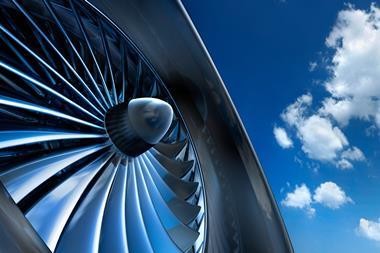Ann Hesketh garners opinion on what the future holds for the fluctuating aviation market
The global aviation market saw the lowest ever year of losses in 2004. But 2005 proved to be a completely different story. With the renewal season for airline business in full swing, what does the future hold?
Over the past months some major air crashes have left many wondering about the aviation industry's notorious safety record. And the market will also have to deal with the aftermath of this year's hurricane season, which will put pressure on the reinsurance market.
The losses arising from accidents with passenger aircraft have been easily absorbed by insurers without damaging the current market.
But, although these losses were not large enough to throw the sector into disarray or dent the profitability of airline underwriters, losses incurred by the hurricane season are pushing up the underlying cost of capital for business, which means that the aviation market is hardening, albeit slowly.
"Based on the nasty aviation losses we have had, the market should be tightening, but in our experience that is not the case," says Barbara Merry, chief executive at Hardy Underwriting.
She explains: "The sector has been subject to massive overcapacity and the losses are being easily absorbed by aviation insurers."
But Stephen Riley, business and corporate development executive at Global Aerospace Underwriting Managers, points out that the losses should be seen as a wake-up call for an industry that became used to reduced exposure.
"Up to 2005 we had a couple of losses, none of which was larger than $500m or more, but the latest incidents remind everybody that we can have large losses."
Safest year
Hull losses for the first eight months of 2005 totalled $430.5m, decreasing 14% from $503m for August 2004, which went on to become one of the industry's safest years.
Until September, hull and liability premiums stood at over $530m, a reduction of 15% for hull and 13% for liability rates, in comparison to nearly $575m for January to September 2004.
However, according to Aon's Airline Insurance Market Review, underwriters will try to end this year's run of premium reductions, which have averaged at 7% for liability and hull insurance combined.
"Airline premiums are not priced at the appropriate level technically," says Merry.
"We can't hope to make a profit unless we are lucky, and we can't write business on that basis. It is highly unlikely we will write any airline business this renewal season."
One of the reasons why rates have failed to pick up, Merry explains, is that some brokers and insurers have decided to honour premiums which were agreed prior to Katrina.
But although the renewal season may not result in the improved rates some would have hoped for, next year could be a different game. The hurricane season will push reinsurance prices up, squeezing certain classes of businesses, and insurers will eventually feel the pinch.
Since the start of the renewal season on 1 October, the market has seen a lot of activity, with some increase in third party liability rates. Steven Doyle, global manager of aviation and aerospace at Aon, says the market will have to accommodate to the changes caused by the hurricane season.
"We have seen other markets generating significantly larger changes in premiums.
"That may put pressure on the aviation market to stop reducing premiums, which is something it can do because it is able to generate better returns than other markets."
And a drop in reinsurance capacity, combined with pressure from other markets, could result in the market hardening in the near future.
In isolation
Atrium war aviation underwriter Bruce Carman says: "Aviation tends to work in isolation in relation to the marine and energy markets, which were most affected.
"But the nature of composite syndicates, with very few writing only aviation business, means we are already seeing some management discussion around rates and changes will happen sooner rather than later."
Doyle adds: "The ultimate challenge for the aviation market is to achieve some form of stability.
We need to smooth premiums to the levels everyone is looking for.
"Larger carriers which have been demonstrating lower levels of growth than other carriers will probably boost premium levels. And the market will slow as a result of market forces rather than growth."
Despite the market's resilience, third party liability rates and individual claims costs are rising.
And it remains to be seen how the market will react to the arrival of the world's largest plane, the Airbus A380, which is due to become operational at the end of next year.
The A380 will carry about 550 people, while its main competitor, the Boeing 747 jumbo, has the capacity to carry 416 people. But Doyle does not believe that the 'Superjumbo' will shake the market.
"It is not significantly larger than currently existing aircrafts to cause the market a problem. And we already encourage clients to buy the largest liability they possibly can."
Riley agrees: "The configuration of the new aircraft is not that different from a large Boeing 747. We need to wait and see how that goes and what is available at the market."
But the Lloyd's aviation market is already preparing for the new arrival. Atrium's Syndicate 609 is leading a consortium of seven underwriters to generate additional capacity of up to $15m per line for the A380.
According to Carman, capacity limit for books of business is likely to increase from the current $250m to $300m.
"This is a substantial increase in value and we will be able to provide that additional capacity." IT





































